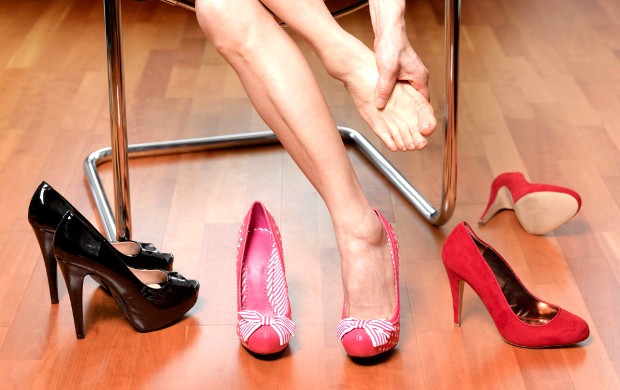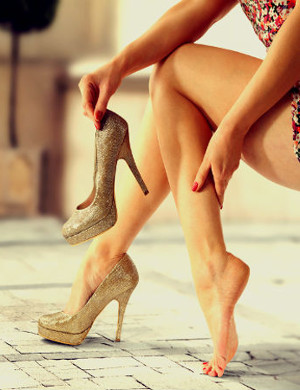For many of us a new pair of shoes can make us feel like a million dollars, but after a while new shoe blues can kick in… causing blisters, sore soles and corns to say the least! Cuxson Gerrard surveyed 60 podiatrists and found that 65% said they commonly advise their clients to change their footwear to tackle an array of foot problems.
Skyscraper heels are by far the worst shoes for our feet and flats are the way forward, right? Wrong. This is not always the case, with the majority of podiatrists from the survey stating that ballet pumps are the most likely style to cause foot health problems! The second most likely was high heeled courts and third flip flops.
Mind boggled? Don’t panic—we have spoken to the leading podiatrist at Carnation Footcare, Michael Ratcliffe, who shares eight top tips when scanning the rows for your next pair of shoes.
Fitting Shoes
- Make sure there is enough room in the front of your shoes (the toe box) to wiggle your toes freely—this is really important and not just for comfort. If the shoe is too tight here then you put yourself at risk of compression lesions such as corns and calluses. Your longest toe should finish about 15–20mm from the end of the shoe (roughly the width of your thumb).
- Ideally there should be enough room in the width of the toe box so that no joints receive pressure or rubbing, for both comfort and safety. Also try to ensure that the sole at the toe box flexes at the same point where your toes bend (go up on tip toes to check this), which helps with push off as you walk, also that the upper material does not crease into your toes.
- Ideally your shoes should have a fastening of some sort, e.g. laces or straps, allowing you to adjust the fit of your shoe when necessary.
- The shoes should have a slight heel gradient. The heel height of your shoe should be around 20–40 mm high and broad for stability and to offset any tightness that you may have in your Achilles tendon. Walking in flat heels and tightness in the Achilles tendon can lead to discomfort and pain in the muscles at the back of your leg and potentially heel pain.
- The upper part of the shoe should be made of natural materials for general flexibility, durability and comfort, reducing the possibility of pressure problems to the upper part of your foot.
- Cushioning inside the shoe is great for comfort and the reduction of the shock of impact when landing on your heel and pushing off from the balls of your feet while walking.
Choose shoes that are firm in the midsole, which is the portion of the shoe between the heel and the toe box (so that you can’t twist them like a dishcloth), helping to offload the plantar fascia ligament. - The afternoon is the best time to buy new shoes, as your feet tend to be more swollen then, so you get a fit true to your largest size.
Combat shoe blues
If you are a big fan of flats, using an insole such as Carnation Advanced Pressure Relief Insoles will help cushion your feet. If you are suffering from Plantar Fasciitis, stretching, resting and using a Carnation PediRoller can help to relieve soreness and massage your tired feet.
Meanwhile, for the heel aficionados, it is important to make sure you protect your feet to help prevent foot health issues. Ratcliffe recommends Carnation Corn Pads to help relieve pressure on corns and prevent them from appearing, and Carnation Gel Bunion Protector offers long lasting and cost-effective protection to relieve the pain caused by bunions.









